Three Days in Segovia
Day Two: Wednesday 22 May 2013
Exploring the Streets, Museums, Graveyards and River Trails of Segovia
Our first morning at the Hotel La Casa Mudéjar we awoke to clear skies and the pleasant call of the Eurasian Blackbird. We first became acquainted with these rather non-descript looking birds the week before at Aigas Field Centre in Scotland. When first we heard it,we doubted the cheerful, melodious song was that of the Common Blackbird. But, indeed that's what it was. It made us think of "Blackbird singing in the dead of night...".
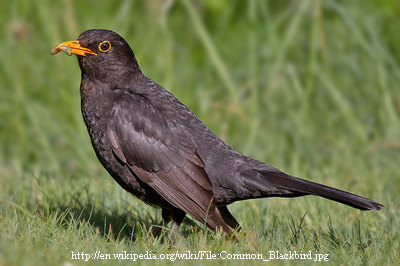 .
.
Although the room at the La Casa Mudéjar was nicely appointed there was no coffee maker. Although this is common in the States and UK, apparently it is not in Spain. To insure we had coffee/tea first thing in the morning I purchased one of these gadgets:
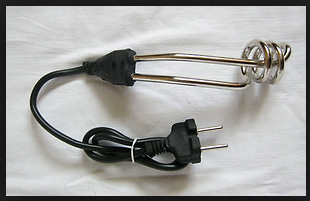
These things have been around forever, but I never had reason to use one before. We had borrowed two heavy mugs from Jeff and Ana and the heater worked great in them. The coffee was instant and what we had at Aigas Field Centre:
 Before we left the Centre we stockpiled a few knowing we would need them for our Segovia stay. Instant coffee is big over here. Not sure why. Cheaper?
Before we left the Centre we stockpiled a few knowing we would need them for our Segovia stay. Instant coffee is big over here. Not sure why. Cheaper?
After our coffee and whole wheat fig bars we were ready to check out the hotel breakfast which was included in the price of the room.
We did not know what to expect. Past experience has show this can be anything from granola bars and coffee to frozen waffles and OJ. Thankfully, this was a cut above that!
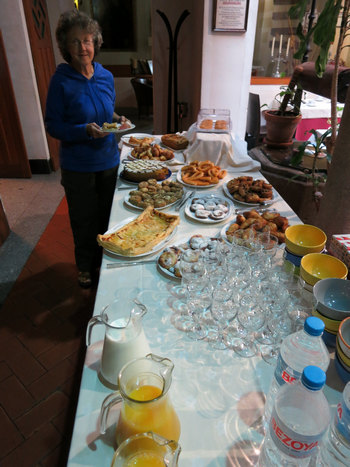
The hotel breakfast selection was quite wide and here Betsy checks out the various pastries.
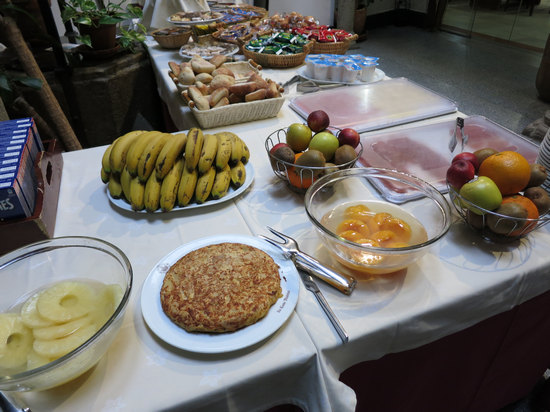
There was plenty of fruit and nice looking Tortilla de patatas (Spanish tortillas)
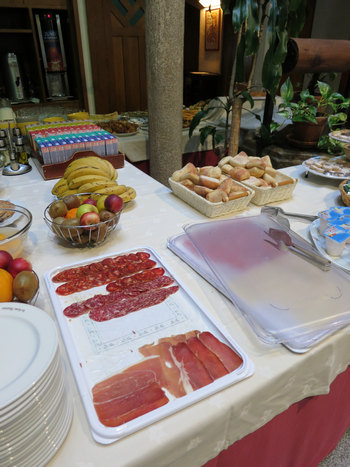
Jamón serrano and chorizo rounded out the selection. We found the crusty rolls in the background made very nice bocadillos we could wrap up and take with us.
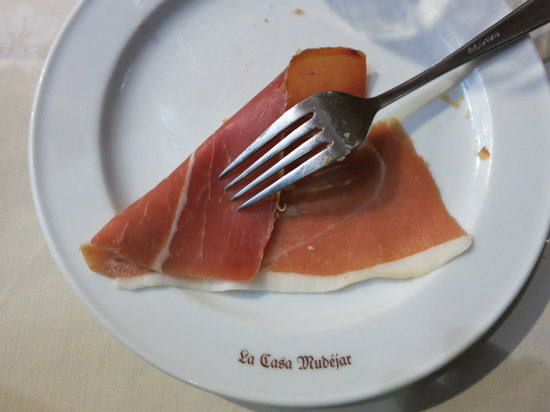
While Betsy attacked the pastries, I "pigged out" on the ham. The edge fat is melt-in-your-mouth. Mmmmm...
After breakfast we headed back to the room to get ready for a day of poking around Segovia.
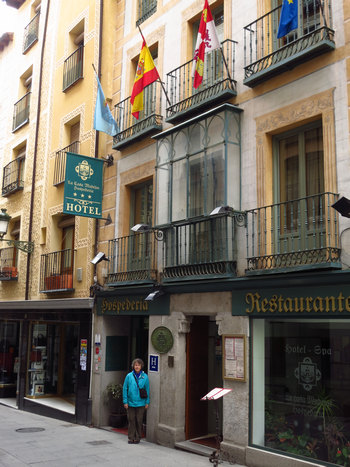
I snapped this shot of Betsy in front of the hotel and we headed out the door and up the street towards the Cathedral and Plaza Mayor.
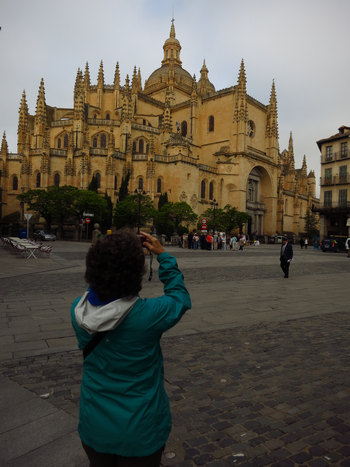
Here, Betsy takes a photo of the Segovia Cathedral. It is a 30 second walk from the hotel entrance.
The massive cathedral was built between 1525-1577 in a late Gothic style, an architectural style that was becoming retardataire elsewhere in Europe. The prior cathedral of Segovia had stood adjacent to the Alcázar, and had been used by the besieged royal armies in their defense.
The rebellious Comuneros were intent on taking the Cathedral to protect its holy relics, and to use its position against the walls of the Alcázar in order to defeat its defenders. In a famous exchange, prominent city officials urged the comuneros to halt their attacks on the church that they should consider the injustice of razing a temple, so sumptuous, while making war against those who serving their king, defended his Alcázar.
But their plea fell on deaf ears, and the comuneros replied: la Iglesia era de la Ciudad (the Church belonged to the City). After a bitter siege lasting months, the cathedral lay in ruins.Source: WikiPedia
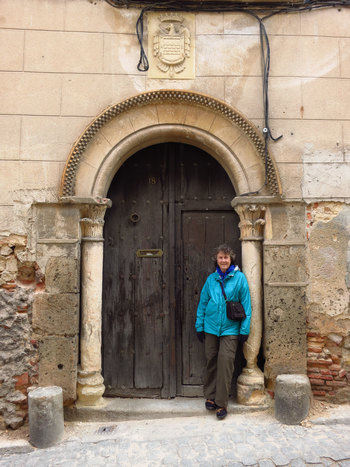
We left the Plaza Mayor and strolled down Calle Marques bel Arco. I snapped this shot of Betsy in a very typical doorway you see along these streets. We then passed Plaza de la Merced and the Iglesia de San Andrés.
In short order the street name changed to Calle Daoiz. This seems to happen a lot in Spain. I guess when you have cities as old as Segovia it is tough to honor everyone with his own street name.
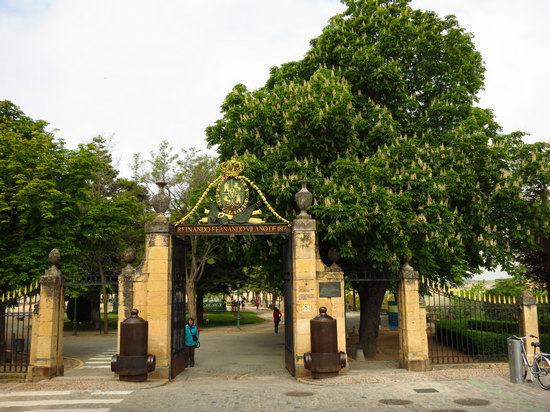
Calle Daoiz dead ends into Plaza de la Reina Victoria Eugenia, the entry garden and memorial area to the Alcázar. Check out the size of those cannons!
We then hung a left and walked along the top of the old fortified city wall, stopping occasionally to take in the view of the Alcázar and Rio.
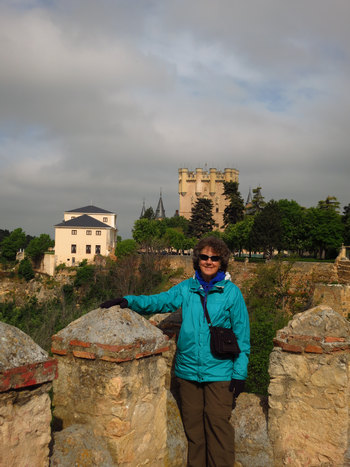
A look back at the Alcázar from the wall.
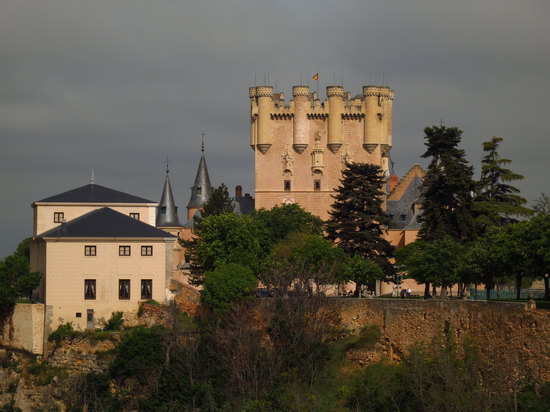
The Alcázar of Segovia, like many fortifications in Spain , started off as an Arab fort, which itself was built on a Roman fort but little of that structure remains. The first reference to this particular Alcázar was in 1120, around 32 years after the city of Segovia returned to Christian hands (during the time when Alfonso VI of León and Castile reconquered lands to the south of the Duero river down to Toledo and beyond). However, archaeological evidence suggests that the site of this Alcázar was once used in Roman times as a fortification.
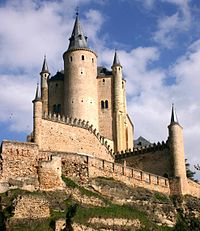
The shape and form of the Alcázar was not known until the reign of King Alfonso VIII (1155–1214), however early documentation mentioned a wooden stockade fence. It can be concluded that prior to Alfonso VIII's reign, it was no more than a wooden fort built over the old Roman foundations.
Source: WikiPedia
From here we walked along the wall, thinking about what it must have been like when there were actually soldiers and look-outs stationed here. Next stop: Museo de Segovia, just down the "street".
The collection on display contains around 1,500 exhibits on archaeology, ethnology and fine arts.
The museum was created in 1842. Highlights of its collection include a pair of Celtiberian boars, Roman mosaics, Visigoth enamels, and a series of panels by 15th- and 16th-century Castilian and Flemish painters, as well as important collections of coins.
There are also crystal and glass items from the Royal Factory at La Granja de San Ildefonso, along with religious sculptures and engravings by Dürer and Rembrandt. The museum has changed sites on numerous occasions before coming to its current venue, a fortification in the city wall known as the Casa del Sol. It has a subsidiary, the Zuloaga Museum, which is housed in one of the most ornately decorated Romanesque churches in Segovia.
What is not mentioned above, and I am not sure why: the Museo used to the be the site of a Jewish slaughterhouse.
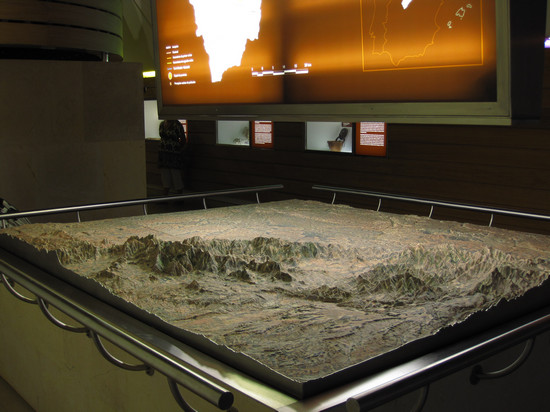
Inside the Museo de Segovia, we studied a model of the local geography (Spain is the 2nd most mountainous country in Europe). The museum has many interesting and beautiful artifacts on display as well as informational videos and dioramas.
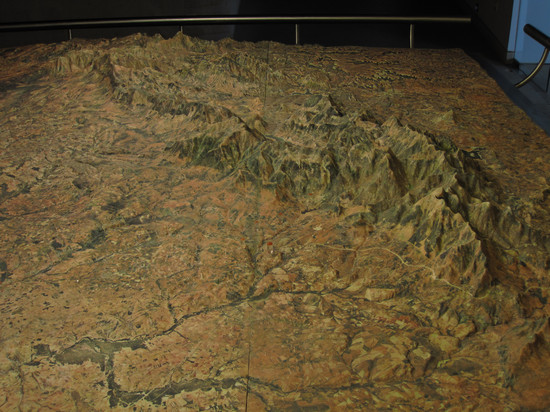
If you look carefully on the right hand side you can see a road winding through the mountains and then heading to a red dot. That dot is Segovia.
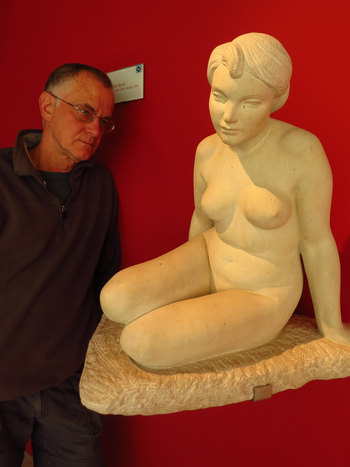
Ahhhh... the daughter I never had.
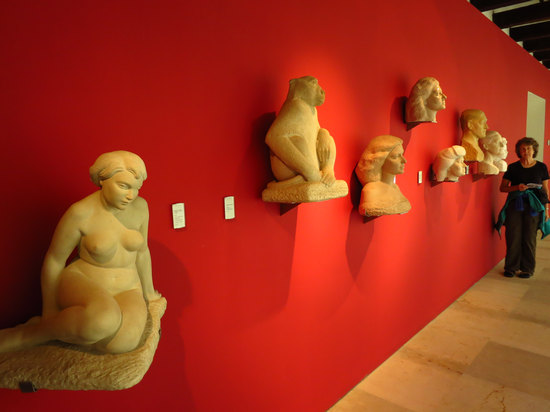
There were many beautiful displays, but it was difficult to get any context or meaning from most since all the explanatory text was in Spanish. What's up with that!!??
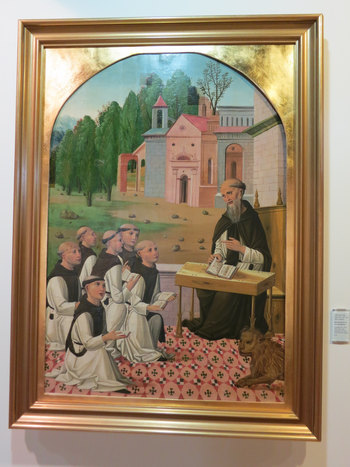
There were some paintings of Catholics doing what they do best - praying, preaching...
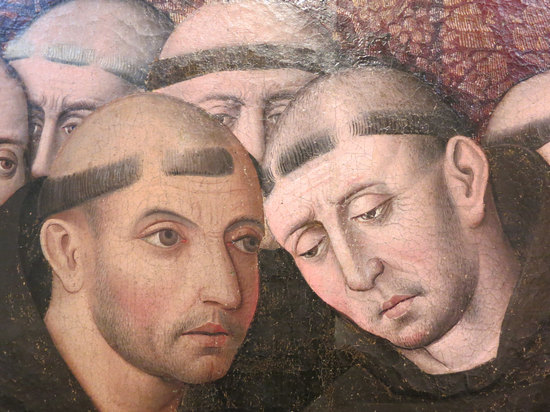
...and generally being downbeat, sad and guilty.
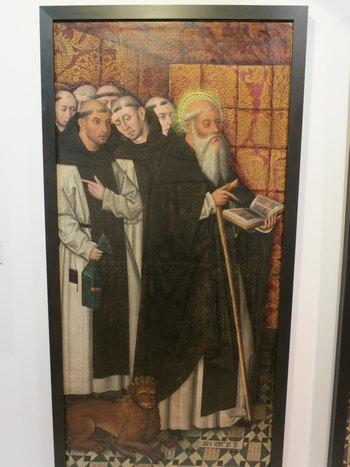
I wonder if the guy on the left pointing the finger is signalling: "Dude, let's get outta here!".
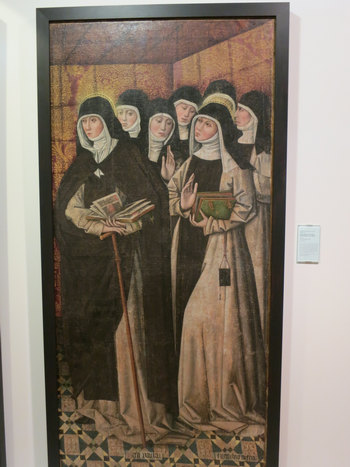
Like the men, Catholic women were a happy bunch as well.
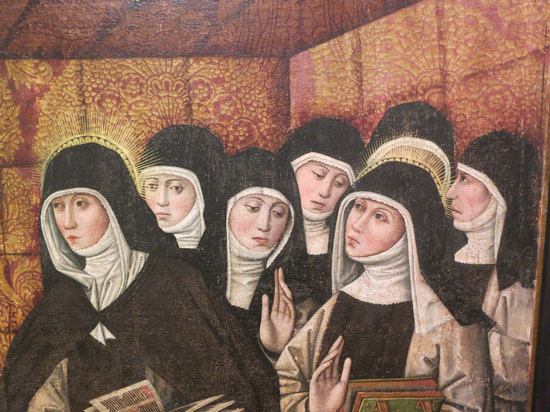
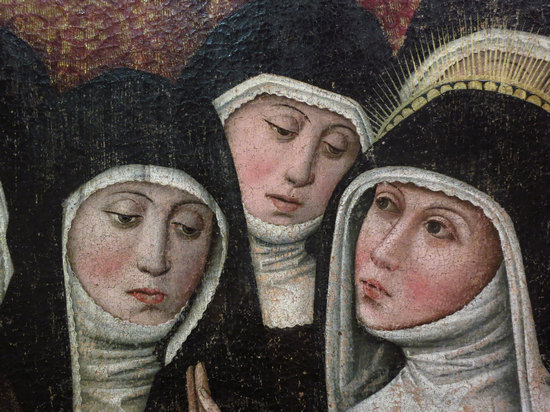
A jolly looking trio.
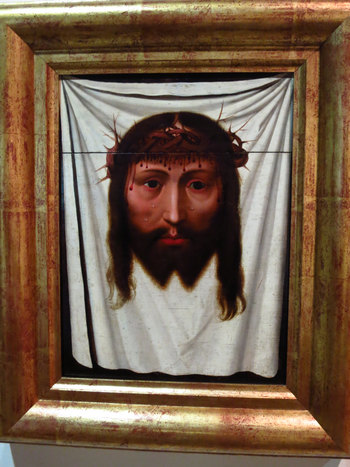
Pain, anguish and suffering - it's the Catholic way!
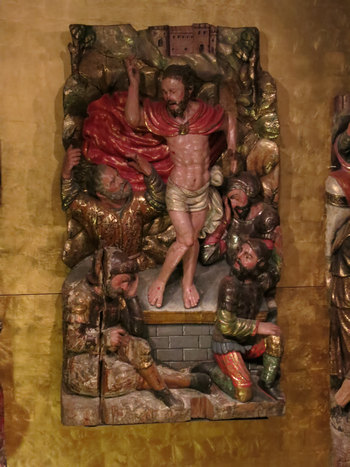
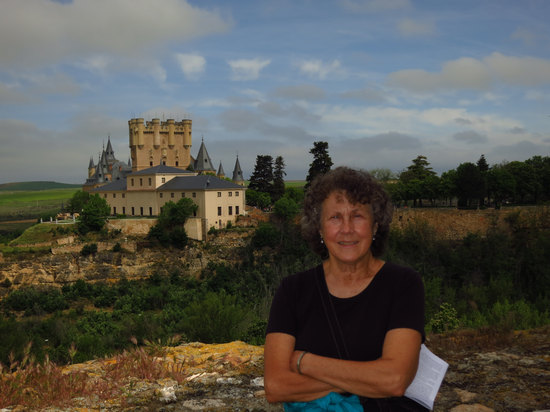
Back in 2010, Jeff shot a photo of me in this exact location - the overlook on the back of the Museo.
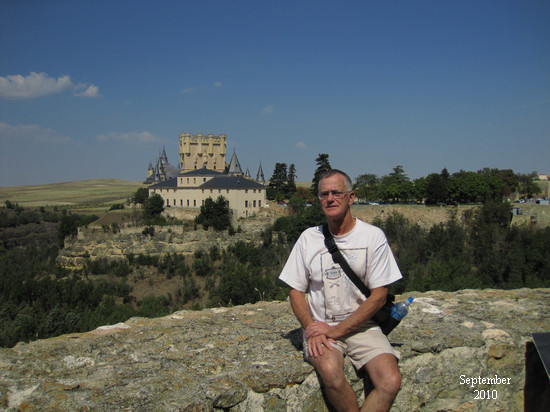
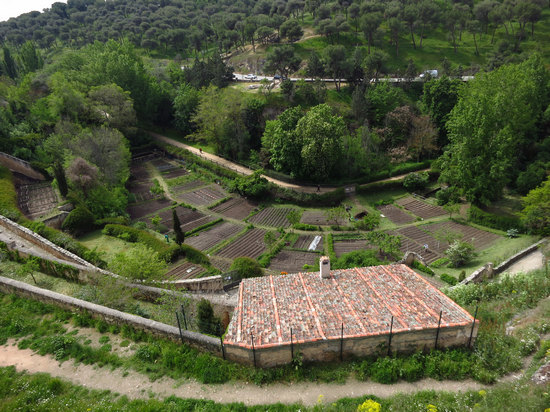
Just beyond the Museo is a good view of the public gardens below and the old Jewish Cemetery on the far hillside.
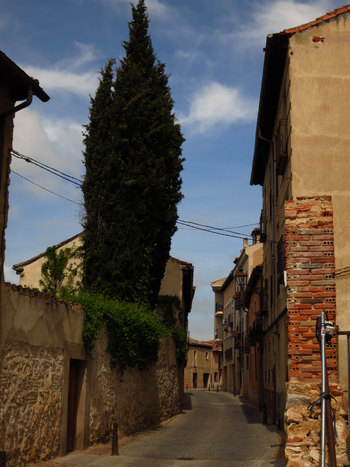
Here we are in the heart of the old Jewish quarter.
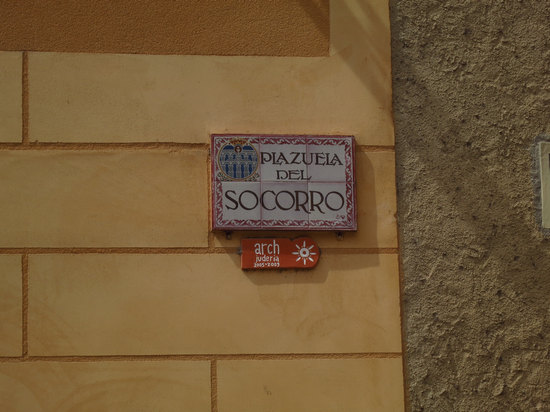
This tile sign is denoting the "plazuela" or small square in the Jewish quarter. The marker below it which says "ARCH Juderia 2005-2009" was placed to mark this area included in the:
"...program of rehabilitation and redevelopment activities in the Jewish Quarter of Segovia. The work has been carried out for four years and a half, and they made an investment reaching 8.5 million-amount contributed by the City Council, the Ministry of Housing and the Junta de Castilla y León. In this period has intervened in 309 of the 318 housing improvement actions likely, ie the Jewish ARCH meeting ends with 97% of the targets set, which makes it the most successful program of Castilla y León" .
Source: SegoviaalDia.es
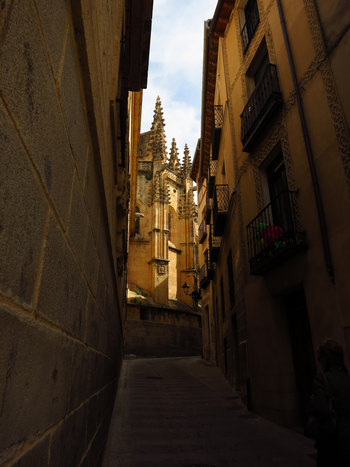
A slice of the Segovia Cathedral as seen through this narrow window of the street.
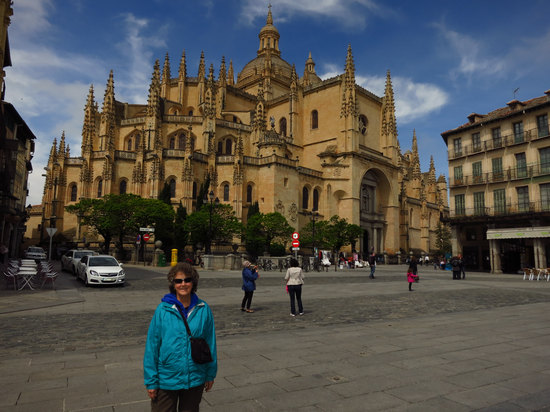
And, here we are - back where we started this morning at the Segovia Cathedral and the Plaza Mayor.
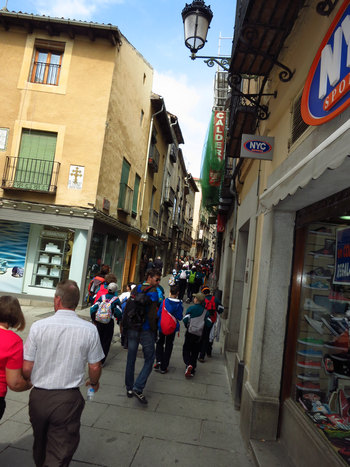
We continued our walk down the busy pedestrianized street which leads to the Plaza bel Azoguejo and Roman Aqueduct. Today these streets were clotted with students on school field trips.
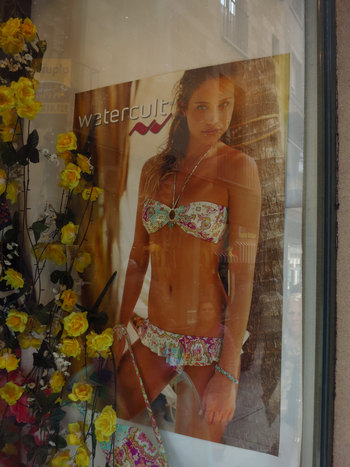
These streets are wall to wall shopping. From high to low end. Here is something on the high end. A biquini for only 300€. What a deal!
We were now on our way to EuroCar to make arrangement for a morning pick-up. I had originally arranged things for an evening pick up. But, when faced with having to find a place to park it for the night I changed my mind.
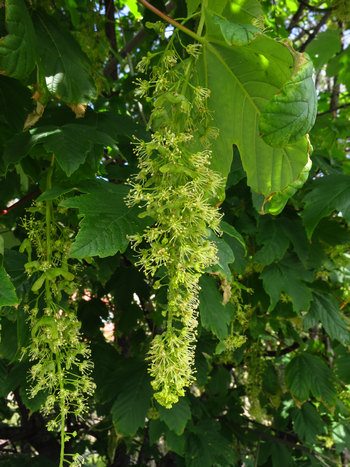
While walking down Avenue la via Roma towards the neighborhood of San Lorenzo we saw this nice specimen of Sycamore Maple (Acer pseudoplatanus) in bloom. Apparently Linnaeus thought the leaves of this maple resembled Sycamore (Plantanus), so he gave this tree the Latin binomial "Acer pseudoplatanus".
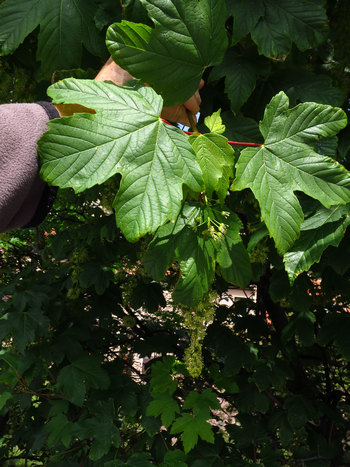
A closer look at the leaves of Acer pseudoplatanus.
After taking care of business at EuroCar and popping into a garden shop to look over vegetable seeds we headed back the direction we came.
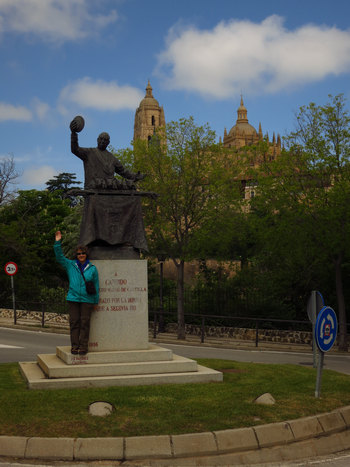
We made another quick stop to honor Candido before heading down Calle Cuesta De Los Hoyos to pick up the trail to the Jewish Cemetery.
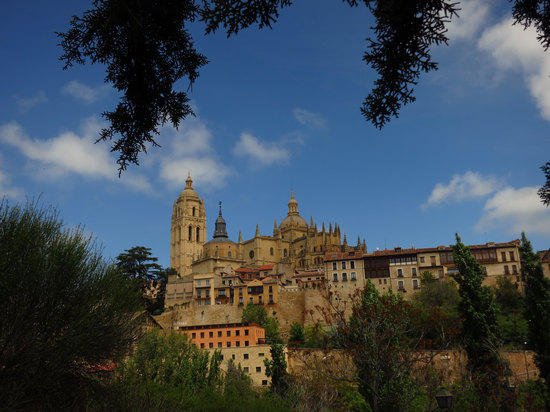
On the way down we got some views of the Cathedral.
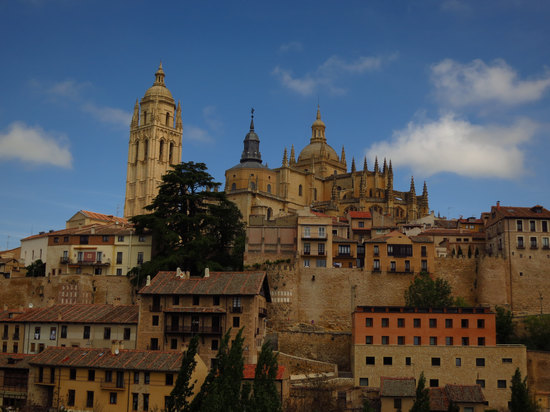
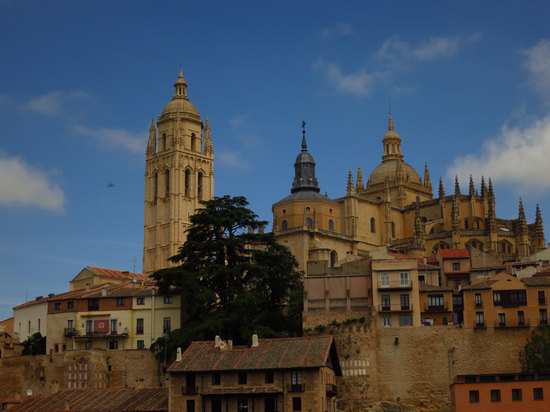
I snapped away, trying to get the best shot.
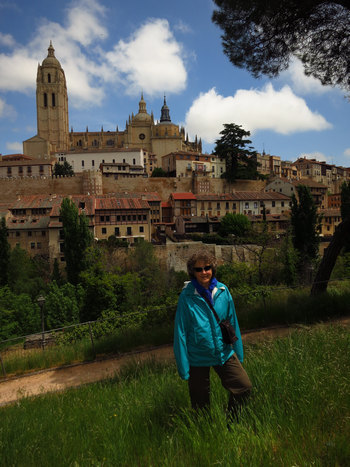
And, here it is!!
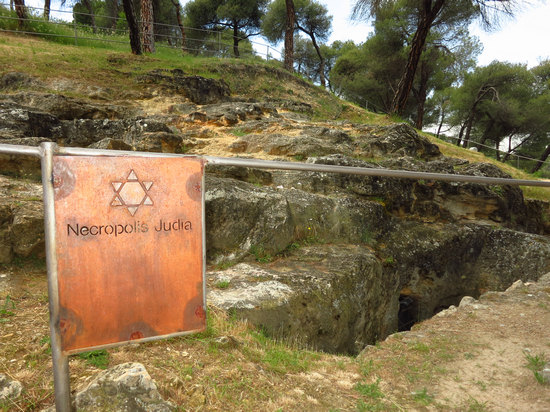
photo0000041.jpg
This has been excavated a number of times but not a lot of information has been gained from these investigations – the gravestones having been looted soon after the remaining Jews had converted to Christianity.
However, it’s possible to see the different methods of burial used, the limestone being carved in the shape of a human body or a cave-like room being created for multiple burials. What can be seen is that all the identifiable graves point in the direction of Jerusalem, with the heads orientated to the west and the feet towards the east.
Another poignant feature of the cemetery is that it was here that those who refused to convert spent their last days in the area, before leaving both Segovia, and then Spain, forever. Their last view of the place they had called home being one of the sun shining on the magnificent, golden, medieval walls.
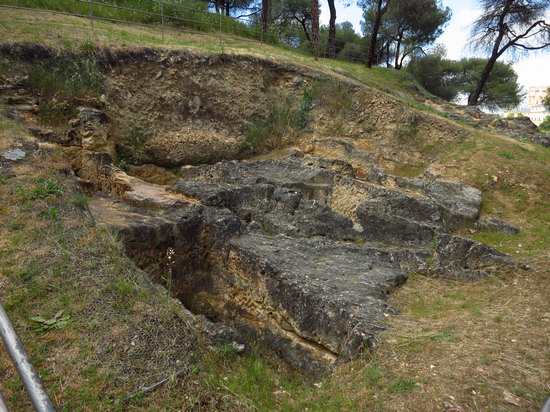
Here is one of the graves, cut out of solid rock.
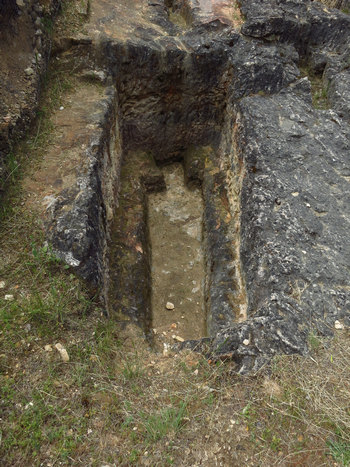
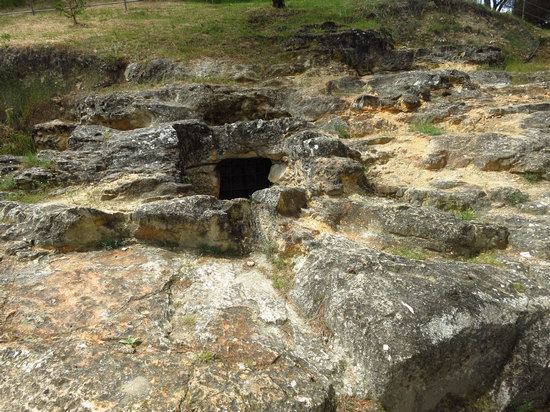
Here is the entry to one of the small, cave like rooms which were used for multiple interments.
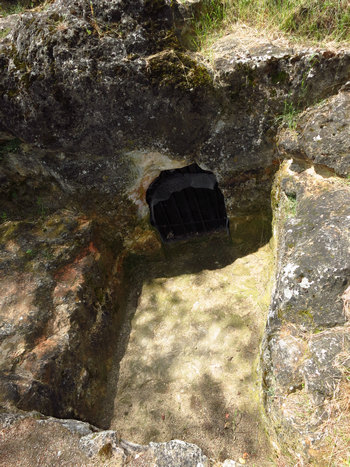
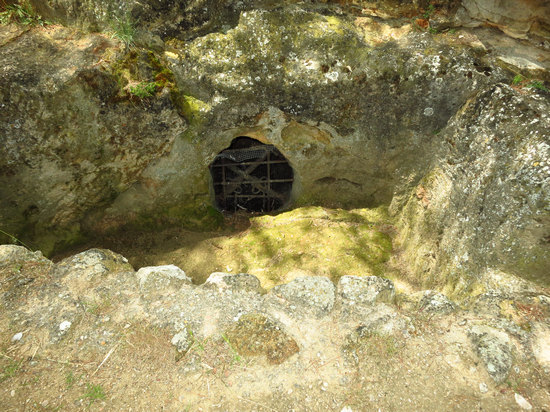
When I was here in 2010 none of these entrances were secured and I crawled right in and looked around. Now, all of them are barred and wired closed.
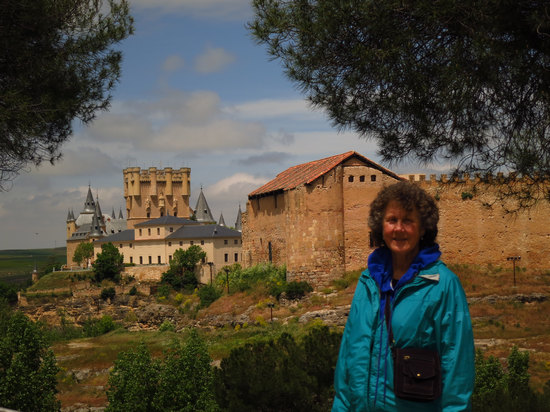
Another look at the Alcázar. From this vantage point you can clearly see the "Casa del Sol" which was the old Jewish slaughterhouse (matadero). It now houses the Museo de Segovia which visited earlier in the day.
The lighter colored buiding between the Museo and the Alcázar is the Casa de la Química (Chemistry House).
The Laboratory (Chemistry House) belonged to the Royal School of Artillery of Segovia. In this institution not only Joseph-Louis Proust taught chemistry, mineralogy, metallurgy and docimasia (from 1786-1799, when he moved to Madrid), but cutting-edge research conducted.
It was there that he discovered the law of definite proportions , one of the fundamental chemistry and basis of Dalton's atomic theory. In addition, published its findings in a journal of first order: Annals of the Royal Segovia Chemistry Laboratory.Currently, the "House of Chemistry" belongs to the Archivo General Militar de Segovia, which is the oldest of the Spanish Armed Forces. This custody about 75,000 bundles in almost 16 kilometers of shelving and divided among the famous Alcázar of Segovia and the "House of Chemistry", which include the control area of the administrative offices of the twenty-four storage rooms.
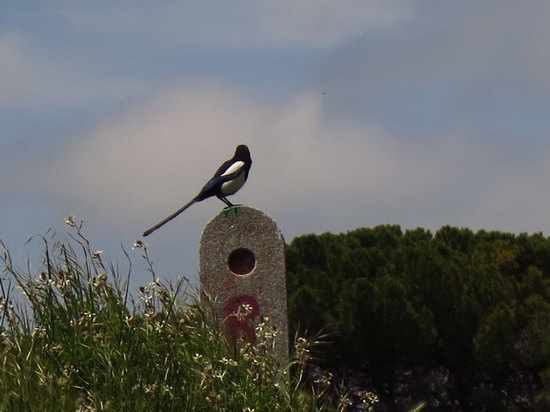
We enjoyed seeing the Eurasian Magpie. They were common all over.
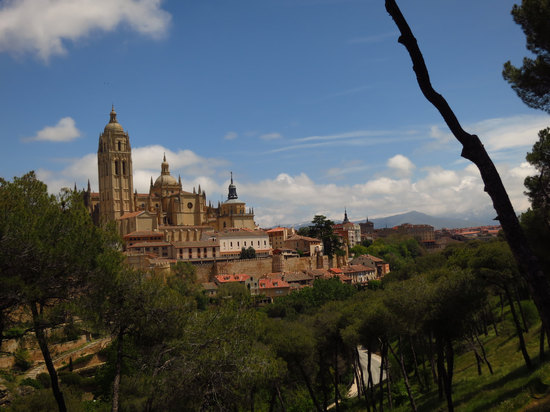
Another look at the Cathedral, city wall and distant mountains. The snow was melting fast!
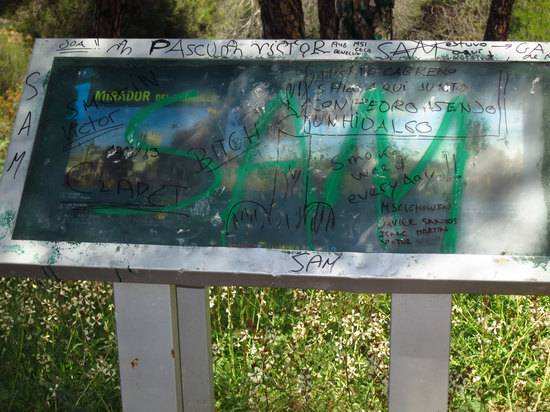
Perhaps this is the reason for the new security at the Jewish Cemetery. Up on this hill every sign and marker had been vandalized.
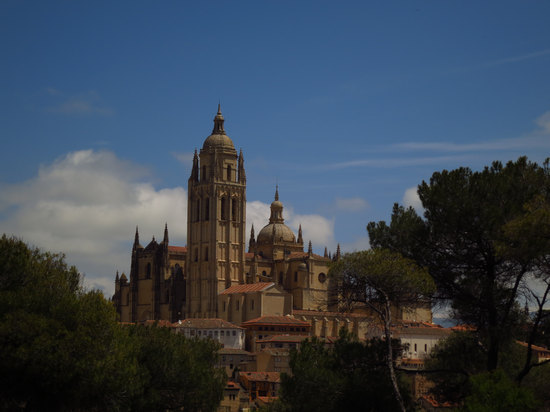
Still another look at the Cathedral!
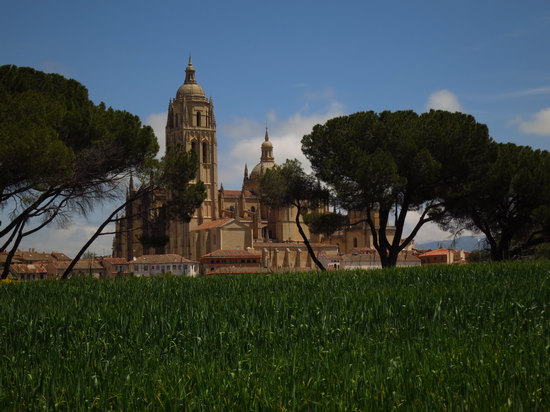
When I was here in September of 2010 these cereal fields were brown and dry. What a difference now.
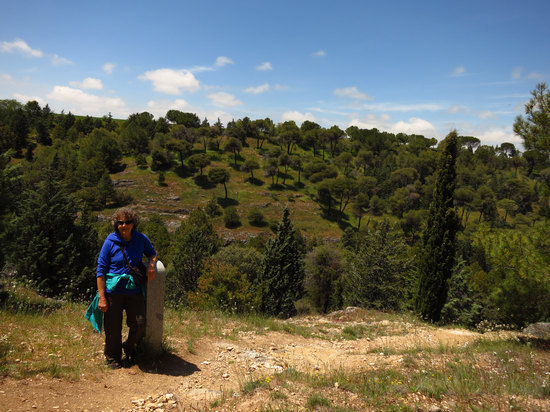
We suspected this trail might have been part of the El Camino de Santiago, but we could not verify it.
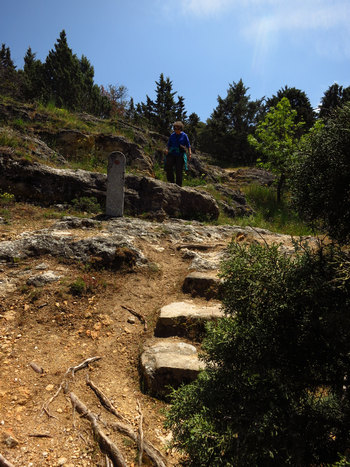
The last section of trail was steep. We were glad to see these steps which went back down to Calle Cuesta De Los Hoyos. We crossed over the roadway and took a set of steps down to the Rio greenway where there are paths on both sides of the Rio Clamores.
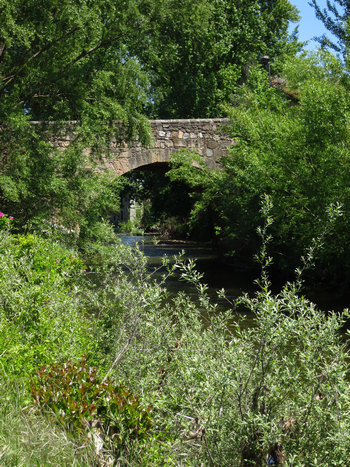
There are several scenic stone bridges across the river.
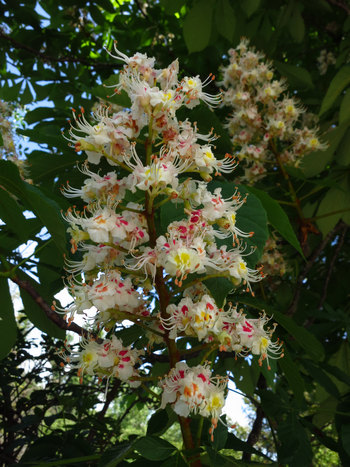
The Horse-chestnuts (Aesculus hippocastanum) in Segovia were in full bloom and we were lovin' it!
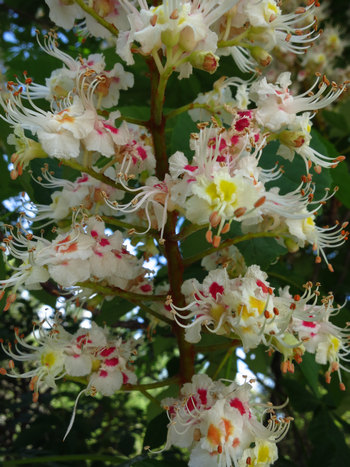
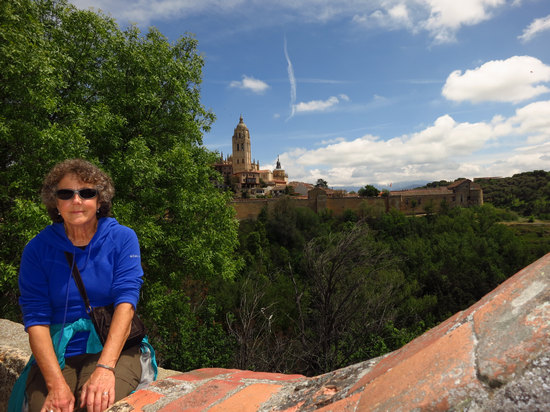
I can't quite remember where this shot was taken but it might have been up near the Alcázar.
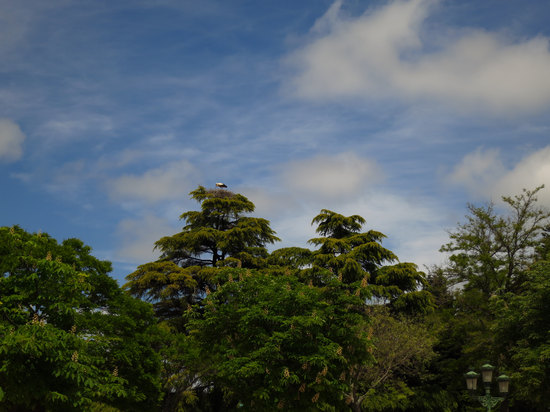
When I arrived in September of 2010 the White Storks had already migrated south to Africa. Now, it was Springtime and they were all over the place.
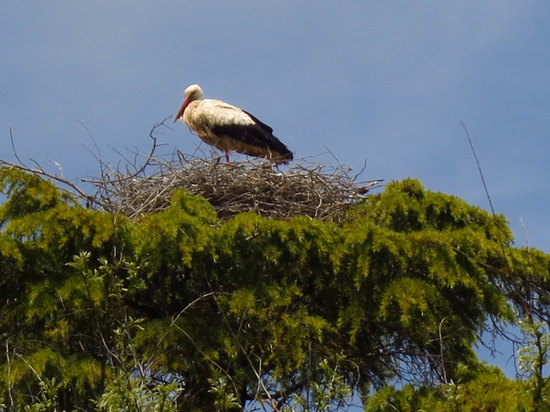

I think the first time I ever heard of a stork was when I was a child and had repeated to me the myth of storks delivering babies.
Storks have been revered in Europe since the Middle Ages. Their association with babies and birth announcements originates many centuries ago in legend and lore native to northern Germany.
One popular stork tale revolves around the folk legend that the souls of unborn children live in watery areas such as marshes, wells, springs and ponds. Since storks visit such habitats frequently, they were believed to fetch babies’ souls and deliver them to their parents.An alternate version of this tale tells of storks finding human infants called “stork-children” dwelling in rocky caves called “Adeborsteine” or “stork-stones” and carrying them to expectant parents.
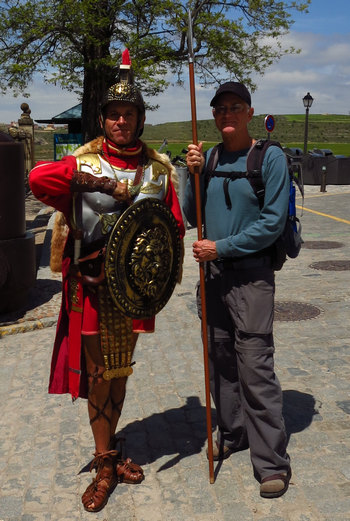
Hail Caesar!
This dude was standing guard at the entrance to the Alcázar and wanted his photo taken with a hillbilly. I obliged him.

We arrived back at the hotel room. I amused myself by taking a few snaps from our terrace.
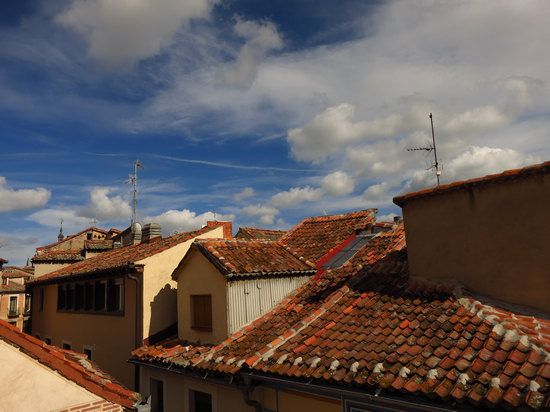
This mish-mash of old tile, hacked in skylights and dormers along with TV Antennas made for an interesting contrast of culture and building materials.
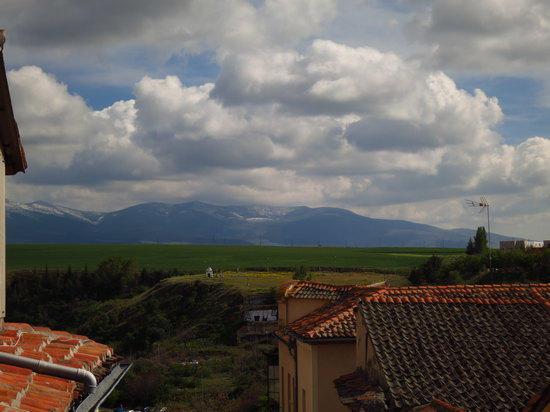
The snow is fading fast and will soon be gone.
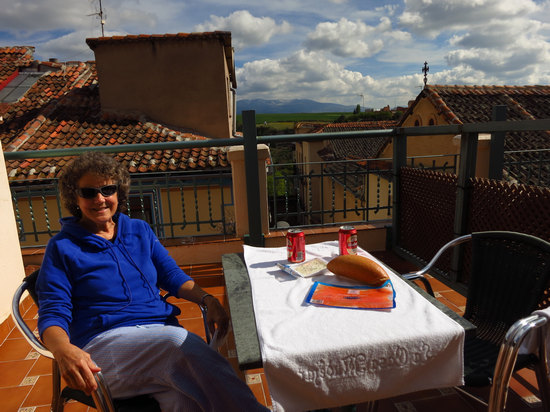
Here is the meal we enjoyed the most during our stay: pre-packaged sliced salmon, packaged bleu cheese, and a crusty loaf to put it all on. Yep, the sunny, quiet privacy of our little terrace made this a most enjoyable meal indeed. And, after washing it down with several beers, all was right with the world.
Tomorrow will be our road trip out into the Spanish countryside. Seeya then!